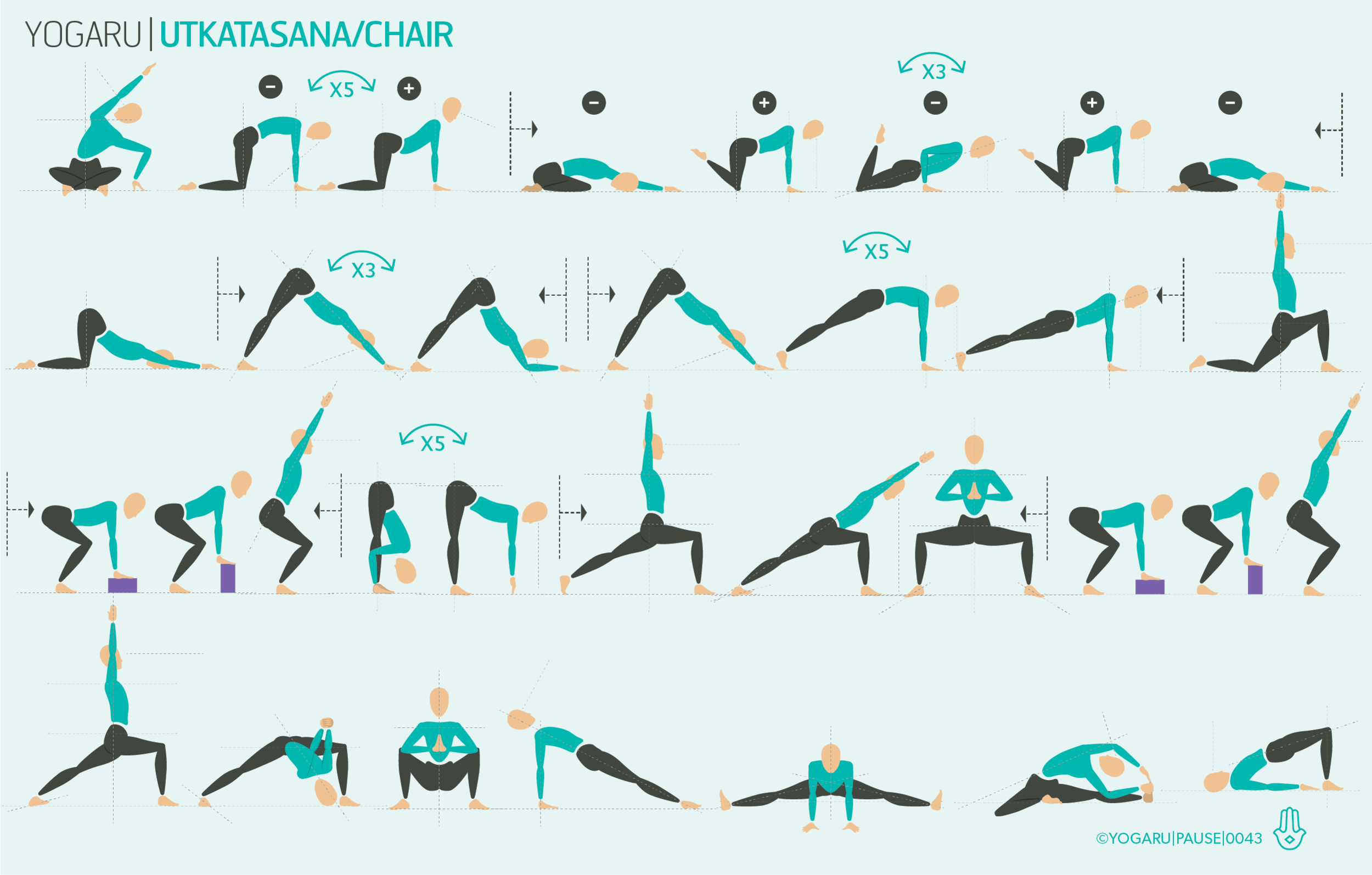EXPLORING UTKATASANA IN YOUR PRACTICE
Utkatasana/Chair is one of those ‘more than meets the eye’ asana. It is a full body pose – strengthening the lower spine, legs, shoulders, hips, glutes and core – and teaching the principles of sthira & sukha, effort & ease, in your practice. As a standing asana, it is energising and stimulates all the organs of the abdomen – particularly the digestive system, which in turn boosts the immune system. As you bend you knees, and dip your pelvis down towards your heels, try to maintain the natural lumbar curve of the lower back. Lightly drawing your navel in towards your spine will protect your lower back from over arching, while it supports the weight of the upper body as it tilts forward from the hip joints.
ALIGNMENT CUES
Try the above sequence which breaks Utkatasana/Chair into three stages. It is not an asana that is easy to hold for many breaths, take a restorative forward fold in between each step, as you explore your alignment. The first two stages of the steps use a brick to support the upper body, while you settle the pelvis into position.
The following are some alignment cues to help you find a Utkatasana/Chair with effort & ease. Print them out, along with the sequence, and play around with what makes sense to you:
Ground down through your heel, top of the thighbones press down towards your heels.
Inner thighs lifted, as you hug your outer hips to the midline, press into your big toe mound to keep your knees tracking over your ankles.
Draw your navel in towards your spine and feel into the strength of your lower back.
Lengthen up through your side body and reach from your tailbone to the tip of your crown.
Broaden through the collarbones, feel into your shoulder blades spin out and hug against your back ribs, soften any tension from your shoulders.
To save the images for personal use click and hold down the image until the ‘save image’ option appears; on Mac hold down ‘control’ and click the image to get the option box; on PC right click on the image to get the option box. Scroll down in the ‘option box’ and click ‘save image’.
Ruth Delahunty Yogaru





